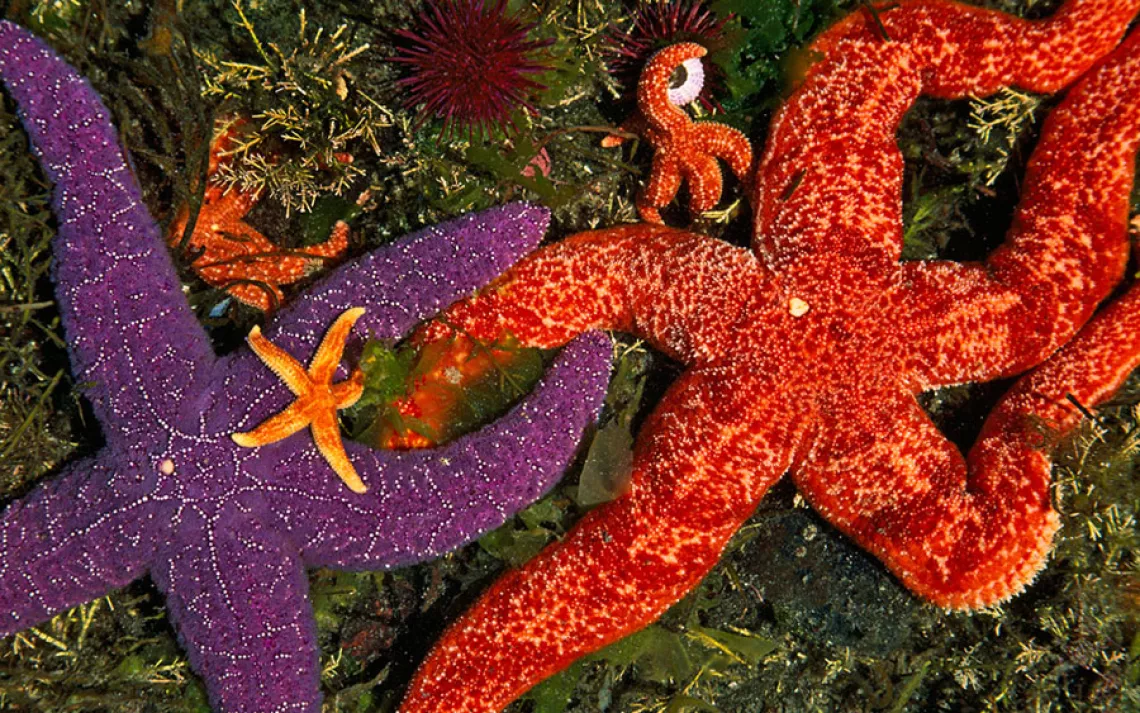Sea Stars
A farewell to arms
These ochre and blood sea stars were photographed at California's Point Lobos State Reserve, but today the spot is very likely devoid of starfish. The Monterey Bay area has been hit particularly hard by a mysterious and deadly disease dubbed "sea star wasting syndrome" that's decimating Pacific Coast starfish populations from Alaska to Mexico. "It's a serious situation," says Drew Harvell, a marine ecologist at Cornell University. "In some areas where there were once thousands of stars, all of them have been killed."
Harvell and other researchers are racing to identify the pathogen that causes starfish to tear themselves apart as their arms crawl away from their body. There have been "wasting events" in the past, but none so widespread as the current die-off. Some scientists speculate that warmer temperatures or ocean acidification are making the stars more susceptible to microbial infection. Mysteriously, some areas seem to be escaping relatively unscathed--San Francisco Bay, for example. Since sea stars are archetypal "keystone" species, with a disproportionately large influence on their ecosystem (they are voracious predators), their disappearance will have grave effects on coastal communities. You can keep up with the latest developments at seastarwasting.org.
 The Magazine of The Sierra Club
The Magazine of The Sierra Club




